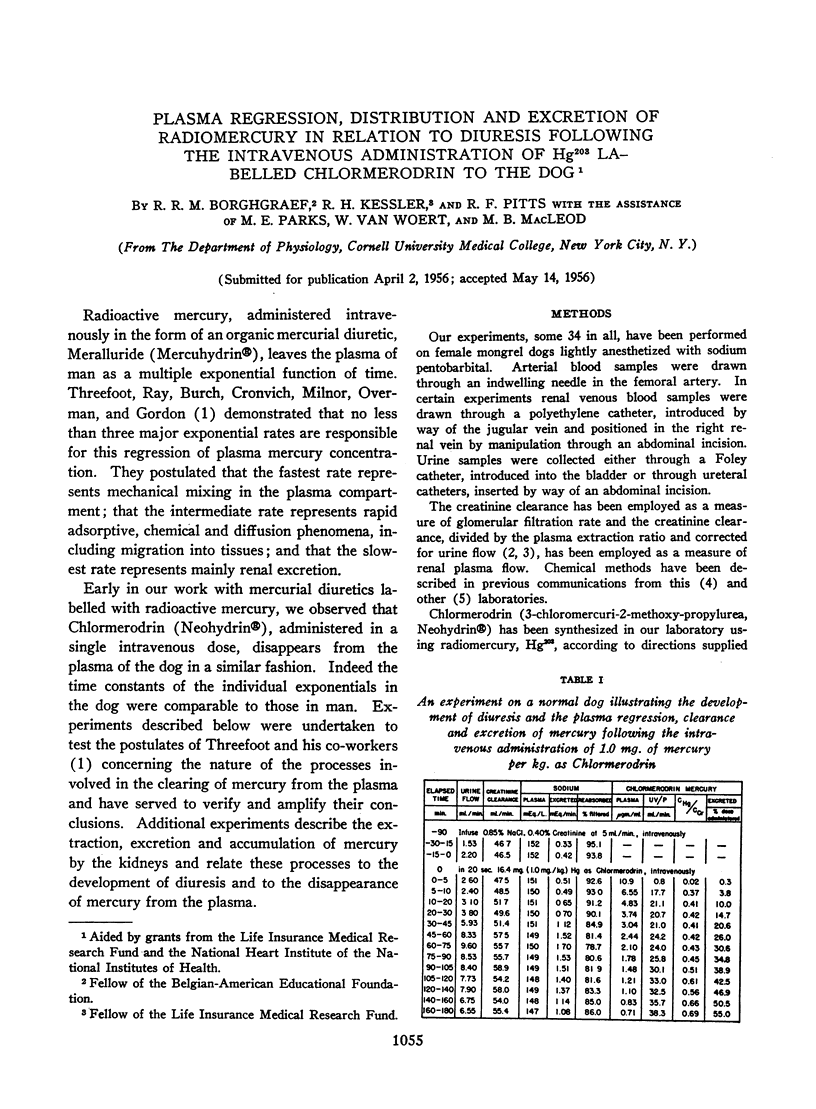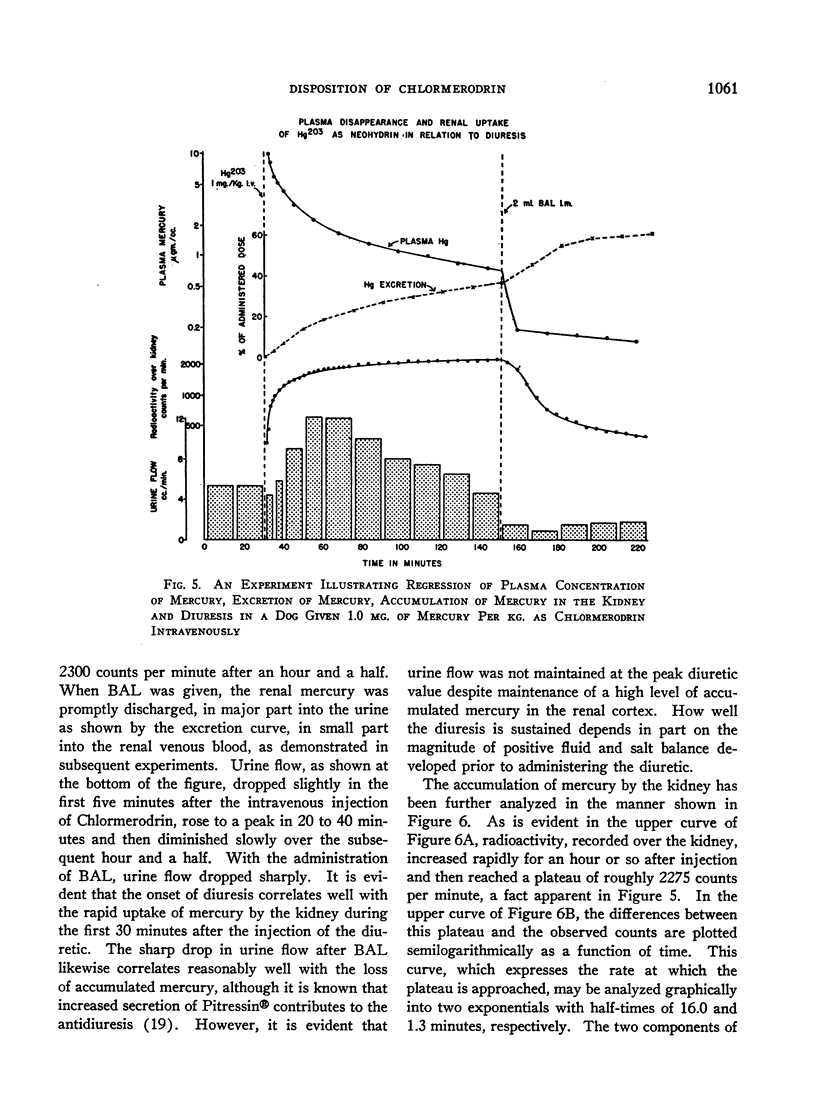Full text
PDF











Selected References
These references are in PubMed. This may not be the complete list of references from this article.
- BARRETT M. J. Chronic and acute effects of mercuhydrin and thiomerin on renal tubular function in the dog. J Pharmacol Exp Ther. 1950 Dec;100(41):502–510. [PubMed] [Google Scholar]
- BORGHGRAEF R. R., PITTS R. F. The distribution of chlormerodrin (neohydrin) in tissues of the rat and dog. J Clin Invest. 1956 Jan;35(1):31–37. doi: 10.1172/JCI103249. [DOI] [PMC free article] [PubMed] [Google Scholar]
- BURCH G., RAY T., THREEFOOT S., KELLY F. J., SVEDBERG A. The urinary excretion and biologic decay periods of radiomercury labeling a mercurial diuretic in normal and diseased man. J Clin Invest. 1950 Sep;29(9):1131–1138. doi: 10.1172/JCI102350. [DOI] [PMC free article] [PubMed] [Google Scholar]
- GREIF R. L., SULLIVAN W. J., JACOBS G. S., PITTS R. F. Distribution of radiomercury administered as labelled chlormerodrin (neohydrin) in the kidneys of rats and dogs. J Clin Invest. 1956 Jan;35(1):38–43. doi: 10.1172/JCI103250. [DOI] [PMC free article] [PubMed] [Google Scholar]
- GROSSMAN J., WESTON R. E., LEHMAN R. A., HALPERIN J. P., ULLMANN T. D., LEITER L. Urinary and fecal excretion of mercury in man following administration of mercurial diuretics. J Clin Invest. 1951 Nov;30(11):1208–1220. doi: 10.1172/JCI102540. [DOI] [PMC free article] [PubMed] [Google Scholar]
- Kennedy J. A., Millikan G. A. A micro blood volume method using a blue dye and photocell. J Physiol. 1938 Aug 15;93(3):276–284. doi: 10.1113/jphysiol.1938.sp003639. [DOI] [PMC free article] [PubMed] [Google Scholar]
- MILNOR J. P. Binding of the mercury of an organic mercurial diuretic by plasma proteins. Proc Soc Exp Biol Med. 1950 Oct;75(1):63–65. doi: 10.3181/00379727-75-18101. [DOI] [PubMed] [Google Scholar]
- MILNOR P., BURCH G. Considerations of renal, hepatic, and extremital arteriovenous differences in concentration of radiomercury of a mercurial diuretic. J Clin Invest. 1950 Jan;29(1):72–86. doi: 10.1172/JCI102237. [DOI] [PMC free article] [PubMed] [Google Scholar]
- PITTS R. F., SARTORIUS O. W. Mechanism of action and therapeutic use of diuretics. J Pharmacol Exp Ther. 1950 Apr;98(42):161–226. [PubMed] [Google Scholar]
- Threefoot S. A., Ray C. T., Burch G. E., Cronvich J. A., Milnor J. P., Overman W., Gordon W. CONCENTRATION-TIME COURSE IN THE PLASMA OF MAN OF RADIOMERCURY INTRODUCED AS A MERCURIAL DIURETIC. J Clin Invest. 1949 Jul;28(4):661–670. doi: 10.1172/JCI102116. [DOI] [PMC free article] [PubMed] [Google Scholar]
- WESTON R. E., GROSSMAN J., LEHMAN R. A., ULLMANN T. D., HALPERIN J. P., LEITER L. Renal extraction and excretion of mercury in man following intravenously administered mercurial diuretics. J Clin Invest. 1951 Nov;30(11):1221–1227. doi: 10.1172/JCI102541. [DOI] [PMC free article] [PubMed] [Google Scholar]


